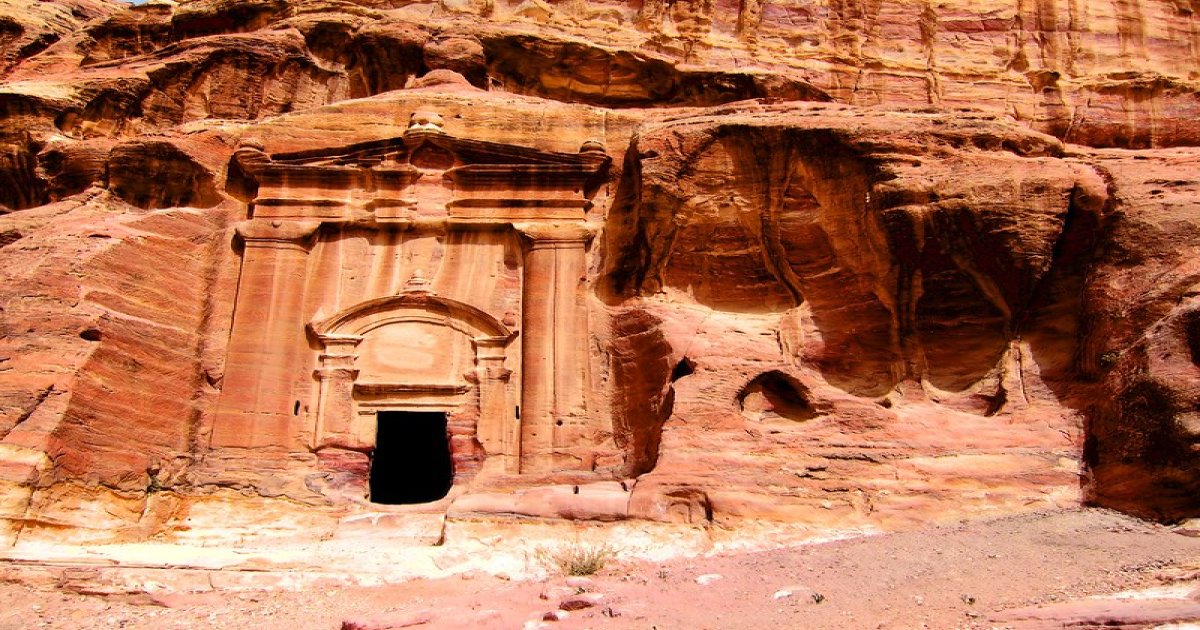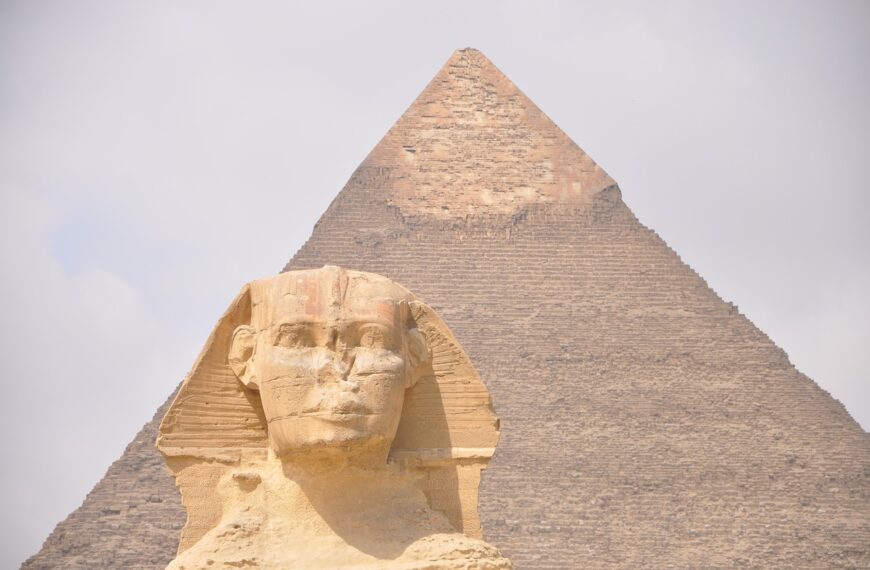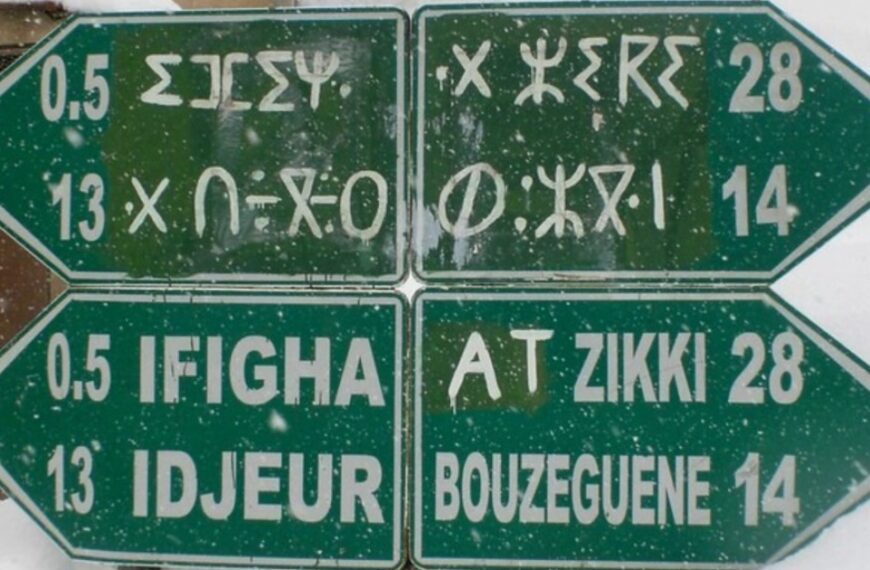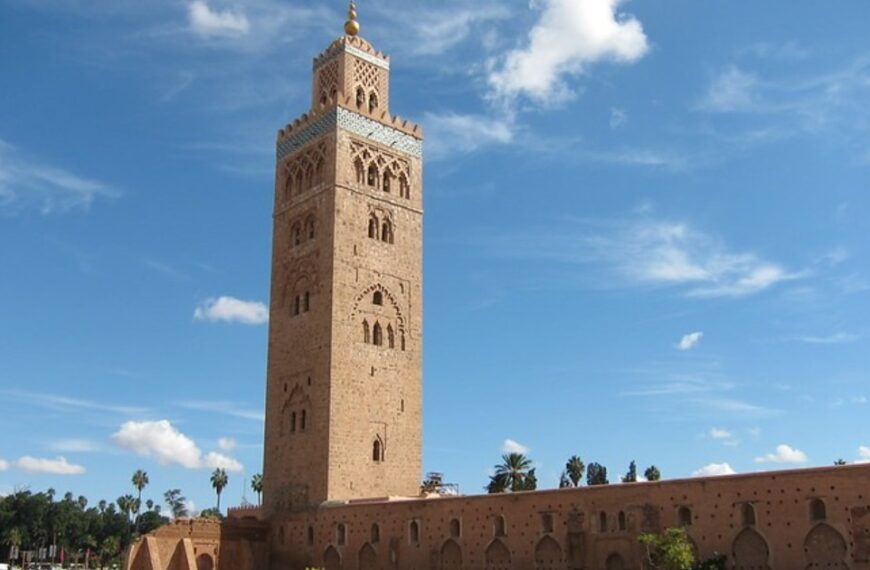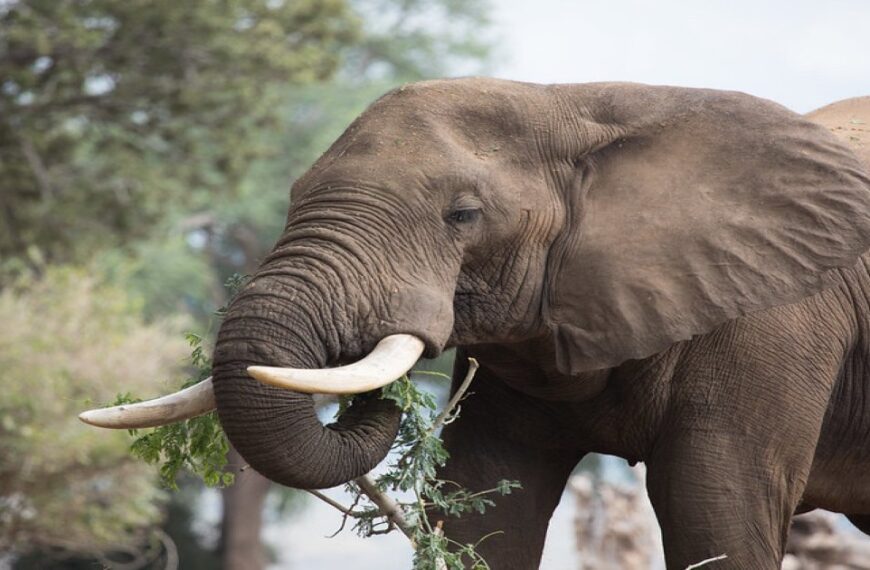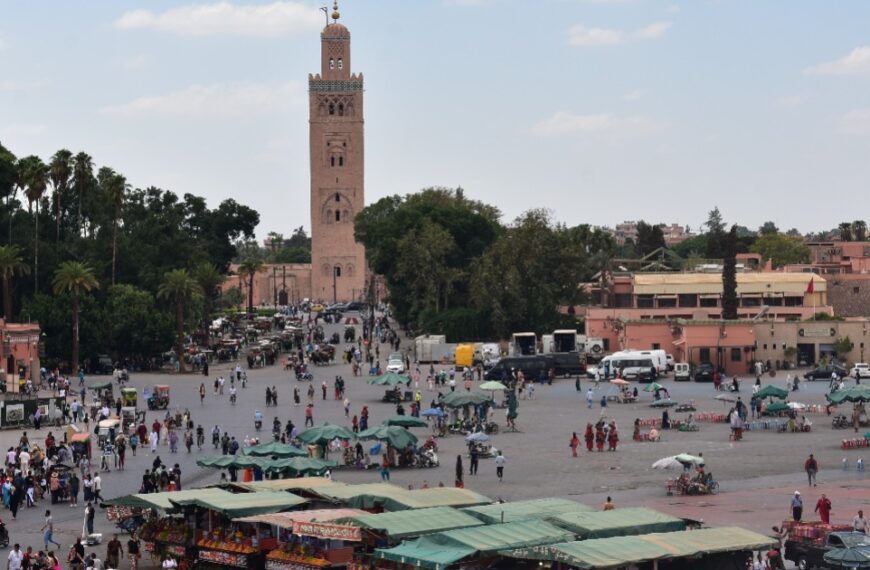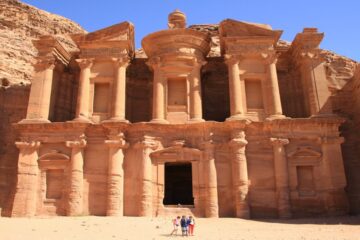Since 1985 Petra, with its many rock-carved facades, has been part of the UNESCO World Heritage Site. Since 1993 the surrounding area has also been added as an archaeological national park. In an online survey done in 2007 that had 100 million participants, it was also declared as one of the seven wonders of the modern world, also known as the new seven wonders of the world, even surpassing the Great Wall of China and the Colosseum. So if you are wondering what to see in Petra, well, everything.
There is no main attraction in Petra; the attraction is the city itself! NeverthelessOur advice is to stop and visit Petra for at least two days, but be aware that – being very large and dispersed – a week would not be enough to visit every corner.
Read also: THE BEST 6 cheapest countries to visit in Africa
The Siq: the entrance to Petra
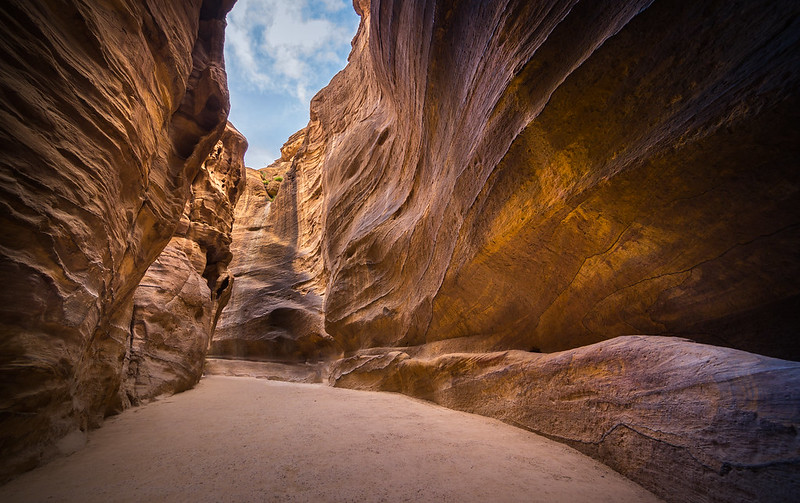
As of today, Petra is a large archaeological site accessed through the Visitor Center by paying a ticket.
Once inside you find yourself directly inside the Siq, the canyon that leads to the heart of the city about 1.5 km long and 80 meters high. As you walk through the canyon, with stretches that squeeze in until you are left with only 2 meters of space, you can admire the wonderful shades of red and pink colors that make up the walls, some of the carvings in the stone, and finally, the canals used to transport water.
At the end of the Siq is Petra’s most famous monument, El Khasneh al Faroun, or the Pharaoh’s Treasury.
El Khasneh al Faroun
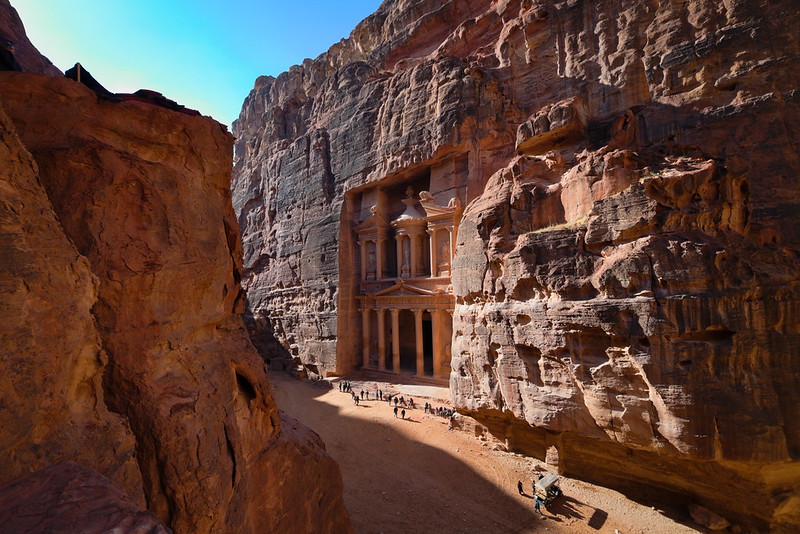
As you exit the Siq you will be confronted by the majesty of the Pharaoh’s Treasury. If we were to suggest a single thing to see in Petra, we would probably tell you this. The site was the tomb of the Nabataean king Areta III in the first century BCE. In 2003, the complex that lies beneath the Treasury was discovered, consisting of 4 burial chambers belonging to the 1st century AD.
The Treasury was used to film some scenes in the movie Indiana Jones and the Last Crusade.
Past the Treasury, the path opens up and continues to the Façade Road where you can admire dozens of tombs and dwellings carved into the rock, in full Nabataean architectural style. The truth is that there would be hundreds of tombs but you have to go and unearth them by taking side paths and walking uphill. Along with the tombs, some temple facades and burial halls are also hidden.
Read also: Edinburgh, what to see in the Scottish capital
The Heights of Sacrifice
As you proceed, the path becomes more challenging and you have to juggle rocks and steps but the best sights are the ones that are hardest to reach! We take you to these steep paths because the Heights of Sacrifice or al-Madhbah is among the really unmissable things to see in Petra.
In fact, the height of the sacrifice is located at a high point that offers a magnificent view so you can admire even more of Petra; not far away there is also a view of the Pharaoh’s Treasury from above, which is absolutely not to be missed.
On the way back you will take an alternative route so that you can explore other tombs, temples, and cisterns that were once used to store water, the main source of wealth in the area.
Continuing along the route we find Petra’s Roman amphitheater, large enough to hold up to 3,000 people, and the Royal Tombs, a series of fantastic monumental tombs carved into the sandstone.
The name Altura of Sacrifice derives from the Nabataeans’ custom of performing ritual sacrifices to deities at this site.
The Colonnade Road
The Colonnade Road represents the central street of Petra and is rightfully among the must-sees. It was built by the Romans on the remains of a pre-existing Nabataean artery in 106 AD. Originally the road was bordered by sandstone columns covered with marble.
Along the road, some remains of the commercial district, and the ruins of the Royal Palace can be seen. At the end of the Colonnade Road stands Porta Traiana, indicating the end of the commercial area and the beginning of the area dedicated to cults.
Al Deir Monastery
Through a long and winding path that includes a staircase of 800 steps carved into the rock, one reaches Petra’s second most famous temple, the Al Deir Monastery dating from the first century. This monument is probably the tomb of the Nabataean king Obodas I. The funerary urn is 9 meters high and is accessible by a staircase. The interior of the Monastery consists of a large room where, in the lower part, there is a podium.
However, the location of the Monastery remains a noteworthy vantage point from which it is possible to peer into the distance of Palestine!
Read also: THE BEST 10 hookah bars in Istanbul Turkey
Costs and Times to see the archaeological site of Petra
The cost of the ticket to visit the city of Petra varies according to the number of days, it is very convenient to buy the ticket for 2/3 days instead of just one. The ticket price for a 1-day visit is around 62€ (50 Jordanian dinars), the 2-day ticket around 68€ (55 Jordanian dinars), and the 3-day ticket around 75€ (60 Jordanian dinars).
As far as visiting hours are concerned, it is possible to visit the city from 6 a.m. until just before sunset: in summer it closes at 6 p.m. while in winter it closes at 4 p.m. After these times Petra still remains accessible for the night tour.
Our advice is to visit these places during sunrise or sunset when the sun gives warm hues to the multicolored stones that make up Petra’s monuments.
Petra by night: illuminated by candlelight
In Petra, it is possible to plan a ‘guided night hike in the old city and see the Treasury under the light of hundreds of candles. The experience consists of walking in the dark starting from Siq and arriving at the Treasury only by the light of soft candles placed along the path.
We suggest approaching this walk in silence to fully enjoy the grandeur of the place. The goal is to recreate the same feelings that the ancient Nabataeans felt when they returned home after a long journey spent searching for new markets. Upon reaching the Treasury, visitors sit down and a musician begins playing the Rababa, an instrument very similar to a flute, and then concludes with a Bedouin telling a story about Petra.
In addition to the beauty of the Treasury with this magnificent setting, the place is also set up to offer a beautiful starry sky.
Duration and times: the Petra by night show lasts about 30 minutes while the total tour about 2 hours starting around 8:30 pm. The night tours take place only a few days a week, so inquire well before you go!
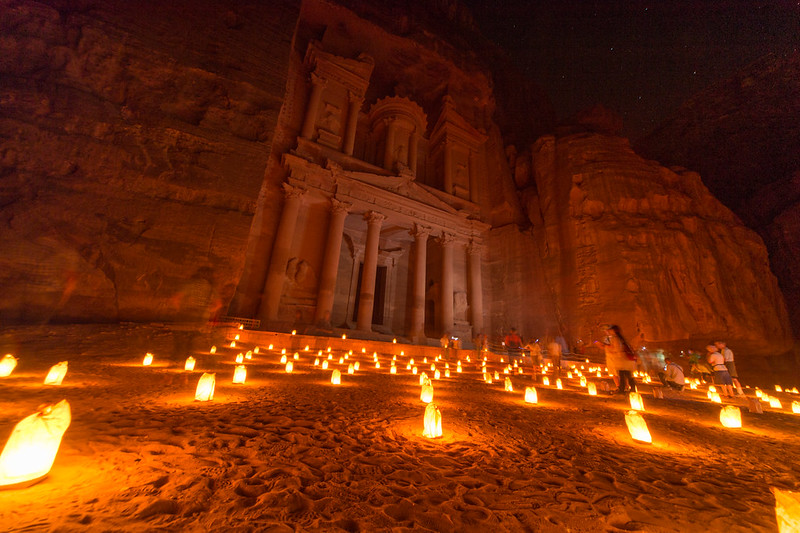
When to go to Petra
Petra’s climate is desert, with really very hot summers. Despite this, there can be heavy rains that flood the entire valley and the Siq.
We suggest that you go in the fall months, between late September and early December. The winter months can be prone to rainfall (however, only 245mm per year), and the summer months to severe heat.
However, you can find our in-depth discussion on when to go to Jordan (and thus to Petra).
How to get to Petra
From Amman’s Queen Alia Airport, located south of the capital Amman, it takes about 2.40 hours of driving to Petra, covering about 200km of road. If, on the other hand, you start from Amman it is about 235km which is about a 3h driving time from the city.
You can also consider staying a few nights in Petra; there are many hotels, both expensive and inexpensive, located outside the archaeological site in the town of Wadi Musa.

